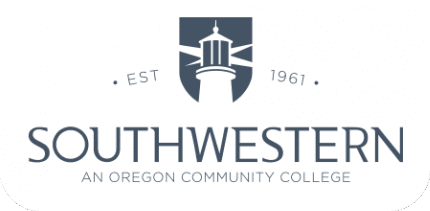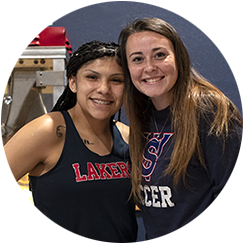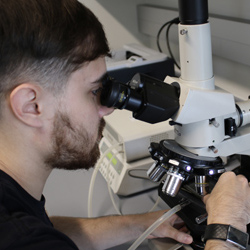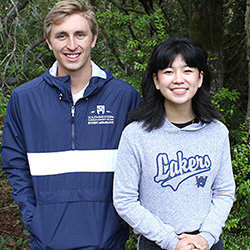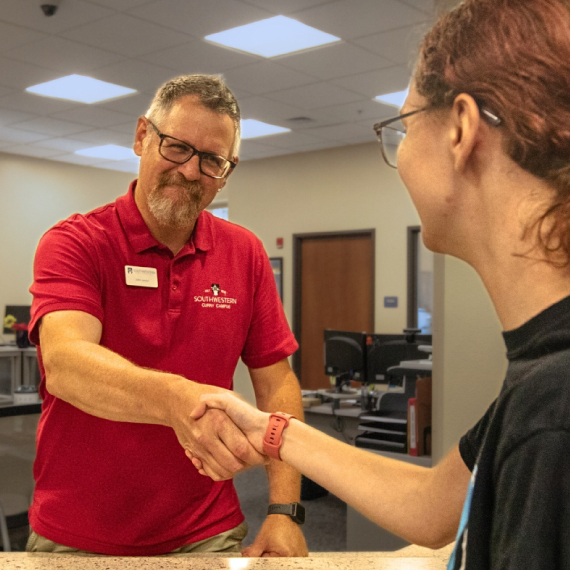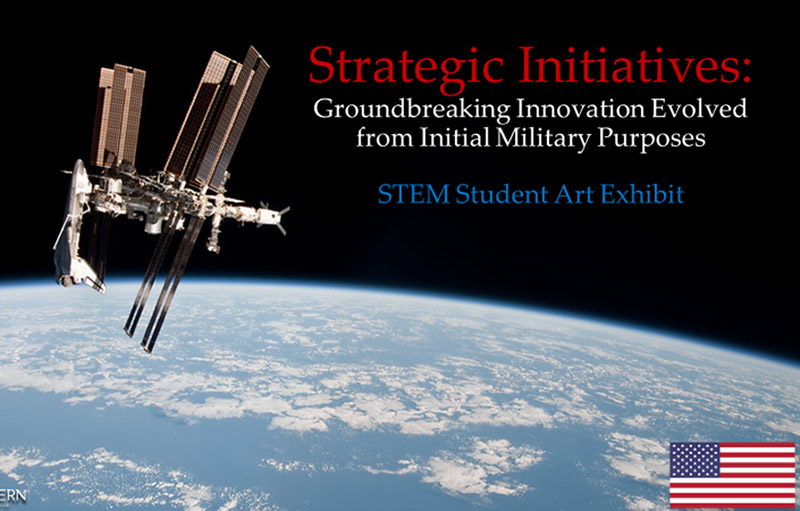
Jun 9, 2022 | News
Coos Bay, OR – Southwestern Oregon Community College is proud to host our STEM Student Art Exhibit Strategic Initiatives: Groundbreaking Innovation Evolved from Initial Military Purposes beginning Tuesday, June 14, 2022 until mid-October in the new Umpqua Hall Health and Science Building on the Coos campus (1988 Newmark Ave., Coos Bay).In celebration of the exhibit please join us Tuesday, June 14th at 7:00 pm for our exhibit opening. Our exhibit opening is timed with Flag Day and the US Army’s birthday to celebrate the contributions that Veterans across the nation made to the scientific world we experience today. We appreciate the continued community support of our STEM programs and events and are excited to showcase our students’ work.
The exhibit features projects and research posters from students in physics, astronomy, and biology courses addressing scientific advancements spurred by military involvement. Exhibit curator Krystal Hopper and Southwestern Associate Professor of Physics, Dr. Aaron Coyner worked with students from March to September of 2021 on the showcased projects addressing questions inspired by Neil DeGrasse Tyson and Avis Lang’s book Accessory to War: The Unspoken Alliance Between Astrophysics and the Military. Their work explores how tools and methods developed for astronomy and astrophysics were applied to military endeavors and vice versa. Student projects include medical advancements in prosthetics, satellite communication,the return to the Moon, and the development of the United States Space Force, among others.
For more information about the Strategic Initiatives exhibit please contact Krystal Hopper at krystal.hopper@socc.edu or Dr. Aaron Coyner, Associate Professor of Physics, at 541-888-7244, aaron.coyner@socc.edu. To learn more about physics and engineering degrees at Southwestern visit https://physics.socc.edu/.
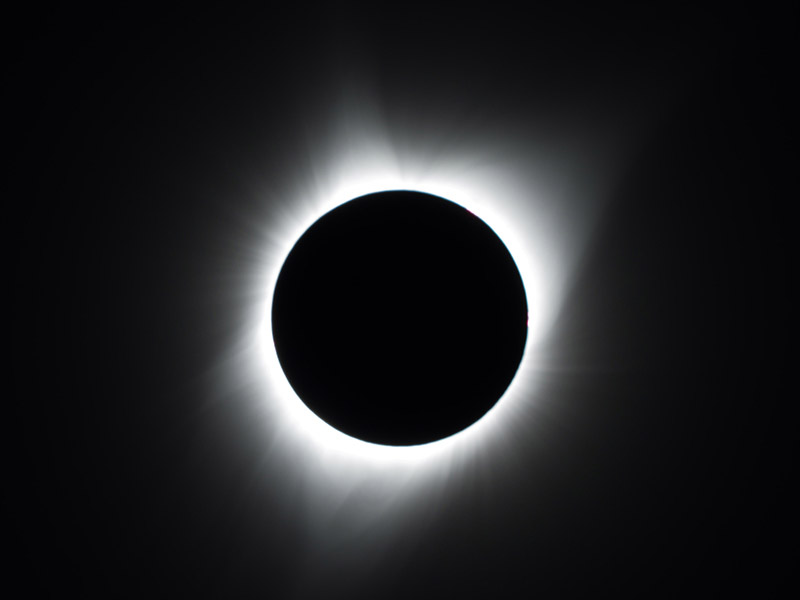
Apr 26, 2022 | Curry Campus, News
Coos Bay, OR – Southwestern Oregon Community College’s Physics and Astronomy Lecture Series welcomes Dr. Angela Des Jardins, Director of the Montana Space Grant Consortium and principal investigator of the NASA- and NSF-sponsored Nationwide Eclipse Ballooning Project (NEBP) to present “Exploring Eclipses at the Edge of Space” on Thursday, May 5, 2022 at 6:30 pm. The lecture can be accessed via Zoom at https://socc-edu.zoom.us/j/94390532783.
Dr. Des Jardins will provide insight into the science that can be learned observing eclipses from high-altitude balloons. She will recap some of the findings from the August 2017 total eclipse and look forward to the coming annular eclipse over Coos Bay in October 2023 and the total solar eclipse across central North America in April 2024.
On August 21, 2017 student teams across the country sent special balloons 100,000 feet into the atmosphere, sending live video of the total solar eclipse from the edge of space to the NASA website and TV. In addition, students conducted scientific studies of the atmospheric effects of the eclipse. The 2017 eclipse ballooning accomplishments spurred student-led, ground-breaking scientific campaigns in Chile during the July 2019 and December 2020 total solar eclipses. Dr. Des Jardins will discuss previous NEBP results, show fantastic eclipse footage, and highlight student opportunities for the upcoming 2023 and 2024 solar eclipses.
The Physics and Astronomy Lecture Series is sponsored in part by the Southwestern Oregon Community College Foundation.
For more information about this lecture and future events, please contact Dr. Aaron Coyner, Associate Professor of Physics, at 541-888-7244, aaron.coyner@socc.edu. To learn more about physics and engineering degrees at Southwestern visit https://physics.socc.edu/.
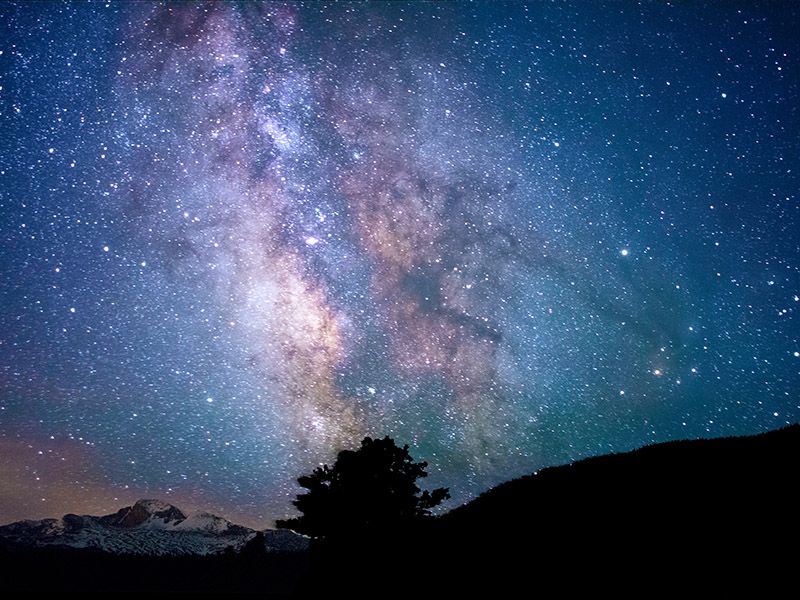
Apr 15, 2022 | Curry Campus, News
Coos Bay, OR – Southwestern Oregon Community College’s Physics and Astronomy Lecture Series welcomes Dr. Tonia Venters with her lecture “Illuminating the Extreme Cosmos through Astoparticle Astronomy”. This will be a virtual lecture to provide insight into astroparticle astronomy. The lecture will be at 5:30 pm on Monday, May 16, 2022, and will be streamed live via our website here: https://livestream.com/swocc/physicsandastronomy2021-22.
Dr. Venters is a research astrophysicist at NASA Goddard following academic studies at Rice University and the University of Chicago. Dr. Venters shares this description of her talk:
For ages, astronomy has relied on light in order to learn about the universe, but light isn’t the only cosmic messenger. Recent developments have brought about the dawn of an exciting new era of multi-messenger astronomy, a discipline that combines observations in gravitational waves and astroparticles, as well as light, to get a more complete picture of the universe and the astrophysical systems within it. Of the different messengers, perhaps the most mysterious are two of the astroparticles: cosmic rays and neutrinos. Cosmic rays are the messengers of the most extreme accelerators in the cosmos; however, efforts to identify their origins have been thwarted for over a century due the fact that they don’t point back to their sources.
On the other hand, even though neutrinos do point back to their sources, individual sources have yet to be confidently identified. In this talk, I will provide an overview of the recent developments in multi-messenger astronomy and then focus on the particular challenges of cosmic-ray and neutrino astronomy. Finally, I will set the stage for next generation facilities that will shed light on the universe through astroparticle astronomy.
For more information about this lecture and future events, please contact Dr. Aaron Coyner, Associate Professor of Physics, at 541-888-7244, aaron.coyner@socc.edu. To learn more about physics and engineering degrees at Southwestern please visit https://physics.socc.edu/.
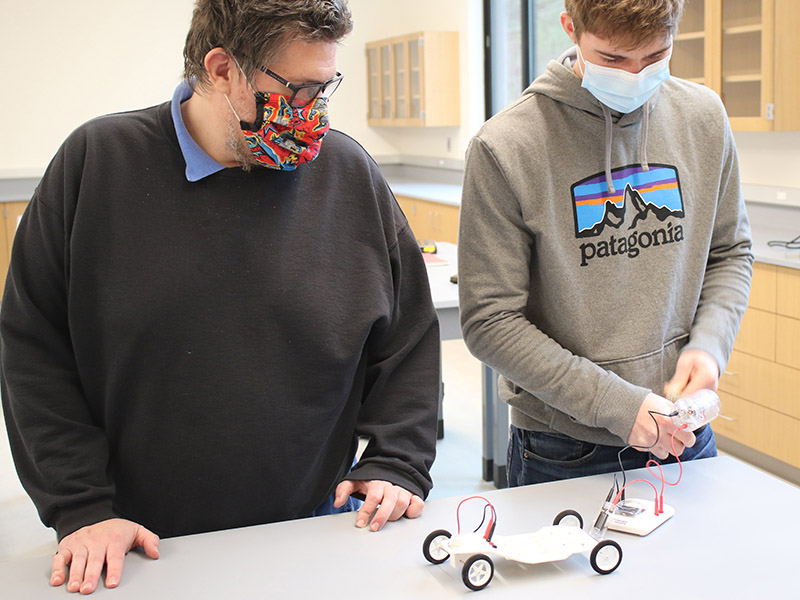
Dec 6, 2021 | Curry Campus, News
Coos Bay, OR – The Oregon NASA Space Grant Consortium’s Faculty Research Award Program has announced it is investing $123,000 in Southwestern Oregon Community College’s Chemistry and Physics/Engineering PRISMS (Providing Research Infrastructure in Space and Material Sciences) project.
This two-year grant will fund faculty and undergraduate research projects, taking advantage of the modern, high-tech laboratories and equipment at Southwestern’s newly opened Umpqua Hall.
“This is a great win for our college. The grant opens the door to top-notch, interactive research opportunities for students at the beginning of their college journey,” said Dr. Aaron Coyner, Associate Professor of Physics/Engineering. “Gaining research experience as an undergraduate shortens the learning curve for science majors as they move on to Southwestern’s partner universities, graduate school or a career in a STEM field.”
Dr. Coyner is a principal faculty coordinator for the PRISMS project, along with Dr. Michael Springer, Associate Professor of Chemistry. They will work do the research side-by-side with their students.
The PRISMS projects creates opportunities for students to do structured, hands-on research and work on publishable discoveries in space physics and material sciences.
The PRISMS projects include research in:
• Modeling and characterization of charged particles that come into the Earth’s interplanetary environment;
• Development and synthesis of new liquid crystal materials for use in flexible solar cells;
• Discovery, analysis and classification of possible micrometeorites found on our coast; and
• Identification and discovery of potential near-Earth asteroids as part of the International Astronomical Search Collaboration (IASC)
Through their research projects, Southwestern’s physics and chemistry students will explore fundamental questions about the origin and composition of matter and radiation that exist in the space between the star systems in our galaxy, and how they interact with Solar wind and Solar energetic events. Students will also get to see and work on analytical studies of micrometeorites and near-Earth asteroid identification. They also will dive into research on liquid crystal photovoltaic cells with the intent of developing self-organizing and self-healing solar cell materials.
Students also are using a state-of-the-art ‘microscope for molecules’ to do university-level, hands-on analysis and research. Special thanks go to Dennis and Janet Beetham who donated the NMR spectrometer for the chemistry department.
“Participating in research is an essential component of learning in a STEM field. Numerous studies have shown a strong correlation between student research and success in STEM,” said Dr. Mike Springer.
This grant provides critical support to facilitate publishable STEM research at Southwestern and allows for a stronger outreach connection to K-12 students and teachers on the south Oregon coast, from Brookings to Reedsport. The College science faculty, in collaboration with students, are looking forward to sharing the results of their research with the community in the future.
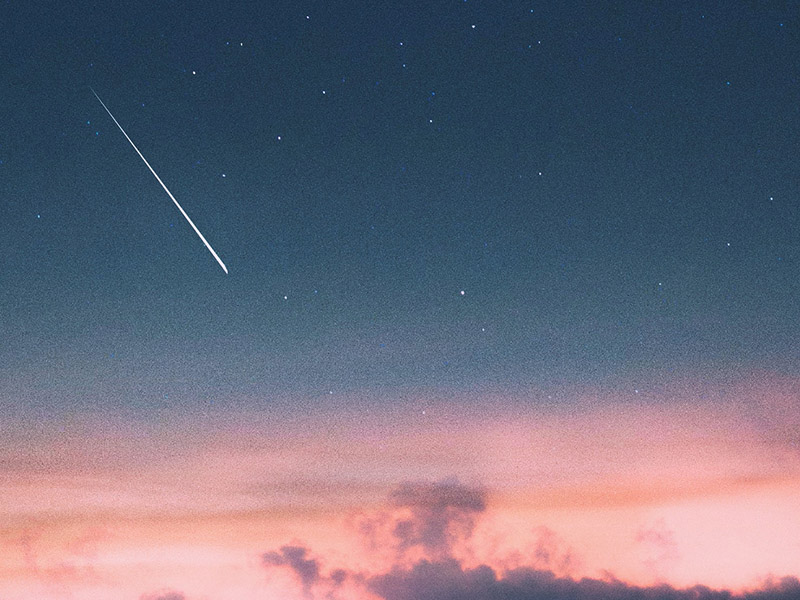
Feb 24, 2021 | News
Courtesy of The World Newspaper – Jillian Ward
COOS COUNTY – Students at Southwestern Oregon Community College are on the lookout for both asteroids and micrometeorites.
Dr. Aaron Coyner, associate professor of physics at SWOCC, has students participating in two new projects. The first is Project Stardust, which is searching for micrometeorites in Coos County.
“Meteorites are fragments of space debris that reach the ground and micrometeorites are much smaller,” Coyner explained. “They are essentially microscopic, similar to sand grands but slightly bigger, spherical and made largely of iron, nickel and other (metals)….”
Project Stardust got started when one of Coyner’s students, Ethyn Killinger, entered a program through the local Oregon NASA Space Grant Consortium. The program, SCOAR, is conducting research into micrometeorites in the area to find and classify them.
Coyner, volunteer researcher Krystal Hopper, and three to four students have formed a team to help with the project. One of these students also attends North Bend High School.
“We are creating collectors using designs given to me by a colleague at Oregon Coast Community College … to collect these micrometeorites from storm drains, downspouts and flat rooftops,” Coyner said. “…The experts in the field have said there is one micrometeorite per square meter that hits the planet every year.”
Coyner hopes the team can find these micrometeorites on flat rooftops or those that have been washed into downspouts and then extract them using a specialized magnet. From there, students will analyze them in a lab where the micrometeorites are cleaned up and analyzed under a microscope. They will be compared to ones that have been previously discovered.
“…We’re building this out so it’s a research project for one of my students but is a team effort and may evolve into a citizen science project as we move forward,” Coyner said.
Coyner said that Killinger has done research into the subject and helped identify local sites where the team will begin collecting samples. They plan on starting next week.
“We expect that our initial findings will be completed by the end of April or the first part of May because (Killinger) has to write a report by the middle of May,” Coyner said.
Looking for asteroids
The second project that Coyner’s students have started working on is the Coastal Oregon Asteroid Search Team. It is an international collaboration known as the International Asteroid Search Campaign run out of a university in Texas.
“We have special software that (the International Asteroid Search Campaign) gave us that allows us to look at images taken by Panstar’s telescope in Hawaii and look through successive frames … for asteroids and other small bodies…,” Coyner said.
The goal is to identify near-earth asteroids that may not have been seen before.
There is a total of 94 teams across the world participating in the project. Coyner said many are in India, with a few from the Middle East and South America. There are only six to seven teams in the United States and “we are one of those teams,” he said.
“(Hopper) and I heard about (the project) when we had gone to a space grant meeting a couple years ago and I had a student interested in doing astronomy data analysis,” he remembered. “I thought it would be a good project to get started but the original idea morphed.”
He turned it into a team project as a way to get students to get experience working with telescope observations and get used to the computer image processing used with the data.
“It struck me as a good learning experience and a good research project to start without having to worry about buying tons of new science equipment,” he said. “It’s something we can do with the computers at SWOCC and that students have themselves.”
In addition, the project fit in well with the current COVID restrictions that have kept students away from in-person classes.
“It’s not something that has to be done physically in a lab,” he said. “You can do this wherever you are.”
So far, he said students have been enjoying it. Though some students are “slightly overwhelmed” as they juggle online school, Coyner said “this is a fun educational break from some of the chaos that has been Zoom classes.”
He asks that if anyone in the area is interested in having the Project Stardust team do micrometeorite collection at their businesses, email him at aaron.coyner@socc.edu or Hopper at physics-engineering@socc.edu. “We’re always grateful for community support,” he said.
To learn more about physics and engineering degrees at Southwestern visit: https://physics.socc.edu/.

